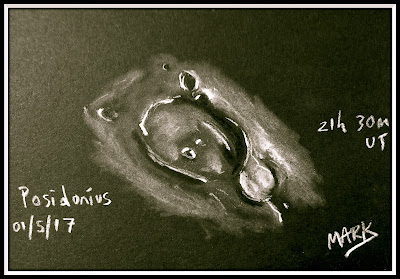 |
| Picture credit: Robert Ayton * |
This years Geminid meteor shower will reach its peak early this coming Thursday morning (about 2.00am).
Most of the meteors between midnight and dawn on the 14th will be fast moving and have a comparatively short trail.
Beautiful to see..... But as always I'm hoping to see the so called Earth-grazers, those early evening meteors that skim the longest path across our atmosphere, much brighter and slower moving than the later evening/early morning main display.
Over the years I have seen several Earth-grazers, or
bolides/fireballs as they are also called.
In my experience, the best time for a chance to see the Earth-grazers seems to be the early evenings a few days before and after the Geminid peak.
A few years ago I spotted a bright bolide breaking into what looked like three distinct separate meteors, I was on Newgale beach at the time looking east....Even though the Sun had not long set, daylight was still very much evident..
That particular bolide was clearly seen in a blue sky, imagine how bright it would have been in the darkness!
Most of the fireballs/bolides I have seen have been in the month of December, and apart from being very bright and slow moving, to my eye they had a tinge of green in them.
For the next week, as the night descends, I'll be wrapping up warm, keeping as far away from streetlights as possible and directing my gaze eastwards.
If memory serves, most of my sightings of the Earth grazers have occurred between Sunset and about 8.00pm

Now all we need is a few clear night!
Good luck , lets hope we see some celestial fireworks.
* Robert Ayton was the artist who illustrated that beautiful little Ladybird book "The Night Sky"
Author: Mary T. Bruck.





















































